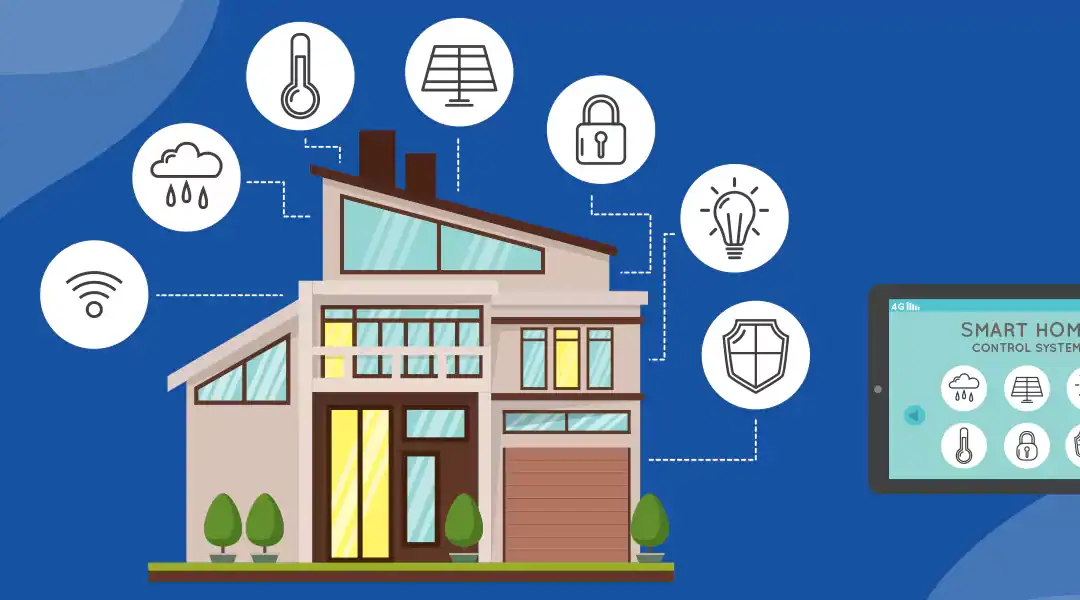A real estate brokerage lives and dies by the speed and accuracy with which it can turn new inquiries into signed contracts. That truth has remained unchanged for decades, yet the mechanics of capturing and processing prospects have evolved dramatically. The newest frontier involves moving lead data directly from Multiple Listing Service databases into enterprise resource planning platforms without the friction of manual downloads, spreadsheet juggling, or redundant data entry. While the idea of integration may sound purely technical, its impact reaches every corner of a brokerage operation, from marketing effectiveness to compliance oversight. Examining the reasons behind the shift, the moving parts that make it possible, and the pitfalls to avoid will help firms decide whether automated import should sit at the top of the technology roadmap.
The Legacy Disconnect Between MLS and Back-Office Systems
Historically, MLS portals performed one primary function: publishing property listings for cooperating agents. Lead information, when generated at all, usually arrived through email inquiries or phone calls prompted by a listing’s contact details. In many offices, an administrative assistant retyped those details into the customer relationship management module of an ERP or, worse, into a paper logbook. Not only did this routine consume time, it invited spelling errors, missed digits in phone numbers, and inconsistent formatting that later hindered marketing automation.
The disconnect became more problematic as brokerages embraced sophisticated ERPs encompassing transaction management, accounting, marketing campaigns, and performance analytics. Agents expected one record to flow seamlessly through the sales funnel—just as professionals in insurance or e-commerce experienced. Instead, they encountered duplicate contacts scattered across stand-alone systems, causing confusion about which profile held the latest notes or document uploads.

Understanding Modern Real Estate ERP Platforms
An ERP tailored for real estate does far more than tally commissions. It houses digital deal files, organizes marketing cadences, schedules showings, and delivers dashboards that track each agent’s pipeline. The moment a prospect lands inside that environment, activity becomes measurable: email open rates, property tour history, and contract milestones. Because the ERP acts as the brokerage’s single source of truth, feeding it timely and accurate information becomes mission-critical. Automation, therefore, revolves around transforming MLS inquiries—whether originating from consumer portals, IDX websites, or direct agent collaboration—into actionable ERP contacts with minimal human intervention.
How Automated Lead Import Works
An automated workflow typically relies on an application programming interface, or API, exposed by the MLS vendor. Each time a consumer requests more information on a listing, the MLS records essential details: name, preferred contact method, property ID, and time stamp. Rather than emailing that data to an agent, the system pushes it through the API, where a middleware—or sometimes the ERP’s integration layer—maps fields to corresponding entities inside the ERP. The property ID can link to existing listing records, while the contact information spawns or updates a profile in the CRM module.
Rules housed within the ERP then assign the lead to an agent based on location, price point, or rotational fairness. Marketing sequences trigger automatically, sending tailored messages acknowledging the inquiry, offering additional photos, or suggesting similar homes. Throughout the process, the brokerage’s management team gains real-time visibility into new lead volume, response times, and conversion probabilities.
Immediate Business Advantages
Speed stands as the most obvious advantage. A lead that enters the ERP within seconds enjoys a higher likelihood of conversion because research repeatedly confirms that immediate engagement dramatically improves outcomes. The agent receives a push notification, picks up the phone before the prospect drifts to a rival listing, and begins building rapport while enthusiasm remains high.
Accuracy rises in parallel. Direct data transfer eliminates transposition errors endemic to manual entry. When an address, email, or phone number flows directly from the MLS record, the risk of mis-keyed information shrinks. Downstream marketing tactics depend on clean data; automation provides that hygiene from the start.
The brokerage’s marketing department gains newfound agility. Because each lead inherits property metadata, such as price range, bedroom count, or neighborhood, campaigns can segment audiences with fine granularity. Messages become more relevant, open rates increase, and unsubscribes decline.
Finally, compliance oversight improves. In many jurisdictions, regulations require firms to demonstrate that consumer inquiries receive prompt and fair responses. Automated lead capture produces an audit trail documenting when the request arrived, which agent accepted it, and how quickly follow-up occurred. Should a dispute arise, the brokerage has verifiable records rather than vague recollections.
Data Quality and Regulatory Considerations
While automation sharply reduces human error, it does not absolve a firm from data stewardship responsibilities. Mapping fields incorrectly can propagate mistakes throughout the system at machine speed. A mislabeled phone number column could populate an email field, causing marketing messages to bounce and skew performance metrics. Rigorous testing in a sandbox environment should precede any production rollout.
Privacy rules, such as the California Consumer Privacy Act and the European Union’s GDPR, also play a pivotal role. Each imposes strict guidelines on data storage, consent, and deletion. A brokerage must ensure that the API call transferring leads includes only permissible data and that the ERP honors opt-out requests swiftly. Encryption both in transit and at rest protects the firm from regulatory fines and reputational harm.
Overcoming Integration Challenges
Every MLS operates with its own API standards, authentication protocols, and data dictionaries. A local association may offer modern REST endpoints, while a neighboring region remains locked in antiquated RETS feeds requiring periodic polling. Brokerages spanning multiple MLS territories must either build separate connectors or adopt integration platforms that normalize divergent schemas into a single format understood by the ERP.
Licensing restrictions can pose another hurdle. Some MLS agreements limit third-party storage of listing data or require visible credit on consumer-facing communication. Legal counsel should review documentation to confirm that automated transfers comply with those terms.
Change management within the brokerage warrants equal attention. Agents accustomed to receiving raw emails may resist a system that auto-assigns leads or enforces standardized follow-up cadences. Training sessions demonstrating higher conversion rates and reduced administrative burdens tend to dissolve skepticism, especially when early adopters share success stories.

Future Trends in Lead Automation
Machine learning promises to expand the value of automated import beyond simple data transfer. Predictive models already highlight which leads display behavioral traits indicating readiness to buy, such as repeated views of a single property or rapid replies to marketing emails. When these insights feed back to the ERP, agents can prioritize calls more intelligently.
Natural language processing will likely enter the scene as well. Consumer inquiries often include free-form text, such as questions about school quality or homeowners’ association fees. Algorithms can parse that text, tag the lead with interests or concerns, and route the inquiry to an agent with relevant expertise.
Voice interfaces, whether through smart speakers or in-car systems, may soon feed the MLS pipeline too. A consumer stuck in traffic could ask a voice assistant about homes under a certain price near a desired neighborhood. That request would ping MLS data, then create a lead in the nearest brokerage’s ERP, complete with voice transcription of questions. Firms that solidify reliable integration frameworks today will adapt to these input sources effortlessly when they emerge.
Implications for Small versus Large Brokerages
Automation delivers value at any scale, yet implementation nuances differ between boutique firms and national franchises. A small office might lean on a software-as-a-service ERP featuring native MLS connectors, minimizing upfront investment. The owner-broker gains enterprise-grade workflows without dedicating internal developers. However, the firm may face limited customization options, accepting whichever fields the vendor chooses to map.
Large brokerages often pursue bespoke middleware, integrating multiple MLS feeds, proprietary marketing engines, and in-house analytics dashboards. While initial costs run higher, the payoff includes granular control over lead routing, branding consistency, and cross-regional reporting. The challenge lies in maintaining that infrastructure as API versions evolve and MLS vendors adjust data policies.
Frequently Asked Questions :
-
What does automated lead import do?
It transfers inquiry data from the MLS directly into a brokerage’s ERP in real time, eliminating manual entry and ensuring every prospect appears instantly inside the firm’s customer-relationship and transaction workflows. -
Which MLS data fields typically flow into the ERP?
Standard integrations pass the prospect’s name, preferred contact details, time stamp, listing ID, and basic property facts; advanced connections can add behavioral notes, price range, and location coordinates. -
How quickly will an agent see a new lead after automation is enabled?
Most API-based solutions deliver the record within seconds, triggering immediate notifications and marketing campaigns pre-configured in the ERP. -
Does automation replace the need for human review?
No. While the transfer is automatic, agents still qualify the lead, personalize outreach, and manage the relationship; the technology simply removes repetitive data entry. -
Are special permissions required from the MLS?
Yes. Each MLS imposes its own rules on data use and storage, so the brokerage must secure API credentials and verify that its ERP complies with display, attribution, and privacy guidelines. -
How can a brokerage measure success after implementation?
Key indicators include shorter response times, higher conversion rates, cleaner contact data, and reduced administrative labor; most ERPs provide dashboards that track these metrics automatically. -
Will the automated import integrate with existing lead-routing rules?
In most platforms, yes. The ERP’s routing engine continues to assign leads based on price, geography, or rotation; the incoming data simply drops into that framework without extra configuration. -
What safeguards protect consumer privacy during transfer?
Reputable systems encrypt data in transit and at rest, respect opt-out flags, log access events, and allow administrators to delete or anonymize records upon request, ensuring compliance with CCPA, GDPR, and similar laws.













